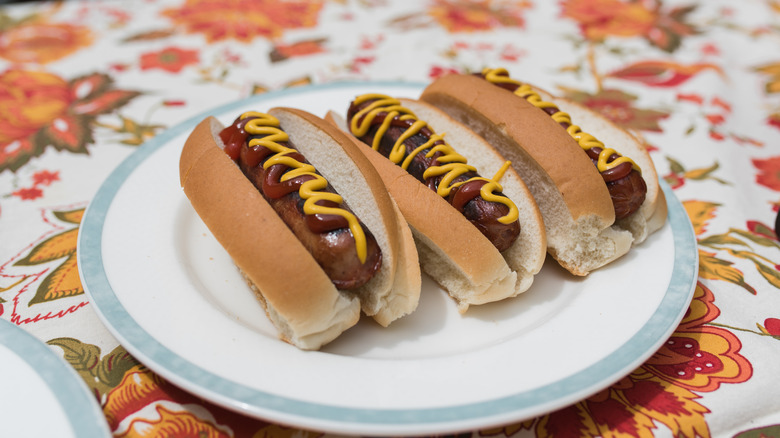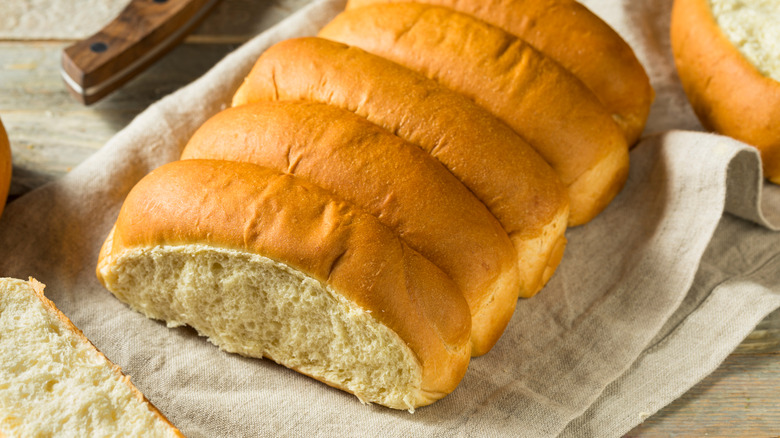The Real Reason New England Hot Dog Rolls Are Split Along The Top
Nearly every major city in America can lay claim to its own unique style of hot dog. Of course, there's the New York City-style hot dog, plucked from a lukewarm bath of sausage water at a sidewalk cart and topped with the bare necessities, but there are also a handful of bolder regional variants like the Seattle-style hot dog with its signature schmear of cream cheese. What sets all of these different varieties apart is the choice of toppings, but New England-style hot dogs stand out for an entirely different reason.
If you've ever ordered a hot dog at Fenway Park, or a lobster roll just about anywhere, you've surely noticed the unique style of bun prevalent in New England. This so-called "New-England-style" or "top-loading" roll is, as the name implies, split along the top, with the crumb of the bread exposed on either side, just waiting to be buttered and toasted (via Boston Globe). Interestingly, these rolls predate the side-split style that dominates the rest of the country, and at first, they weren't used for hot dogs or lobster rolls.
The top-split bun was invented for fried clams
According to New England Today, the famous rolls can be traced back to the kitchen of Howard Johnson's, the Massachusetts-based chain of restaurants and motels that once boasted locations across virtually the entire country in the mid-1900s. Sometime in the late 1940s, the chain contacted a Maine-based bakery named J.J. Nissen with a special request (via Boston Globe). They wanted a special roll for their fried clam sandwich, one that could stand upright to make preparing and eating them more convenient.
Hot dog rolls, as we know them, are only sliced partway through to create a hinge of sorts. However, at the time of Howard Johnson's request, the technology to do so did not exist. According to the Boston Globe, until that moment, you could only buy buns that were cut all the way through into two slices. J.J. Nissen developed a special pan to bake the rolls, which became an instant hit at Howard Johnson's locations.
The fact that it lent itself well to display and the exposed crumb on the sides could be buttered and toasted, were also key to the New England roll's success. Side-cut rolls, introduced in the '50s, per New England Today, didn't have these features, and yet somehow they became the norm around the nation, while the New England roll remains a regional treat.

